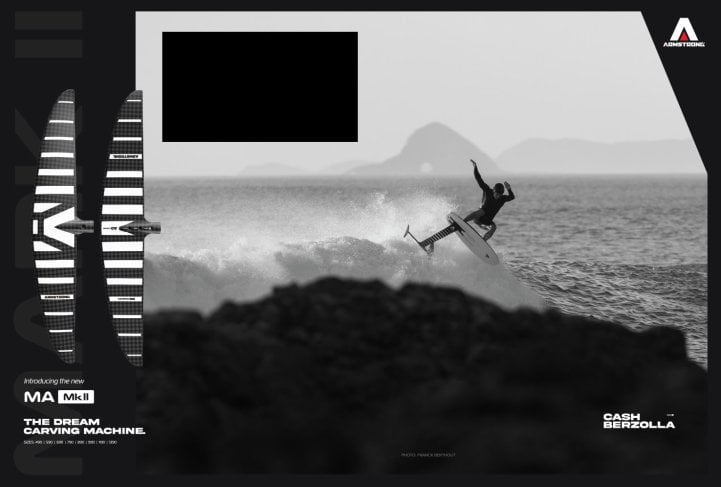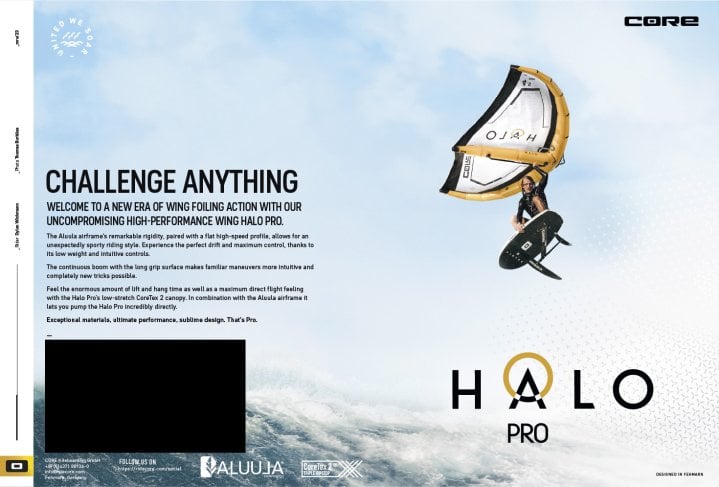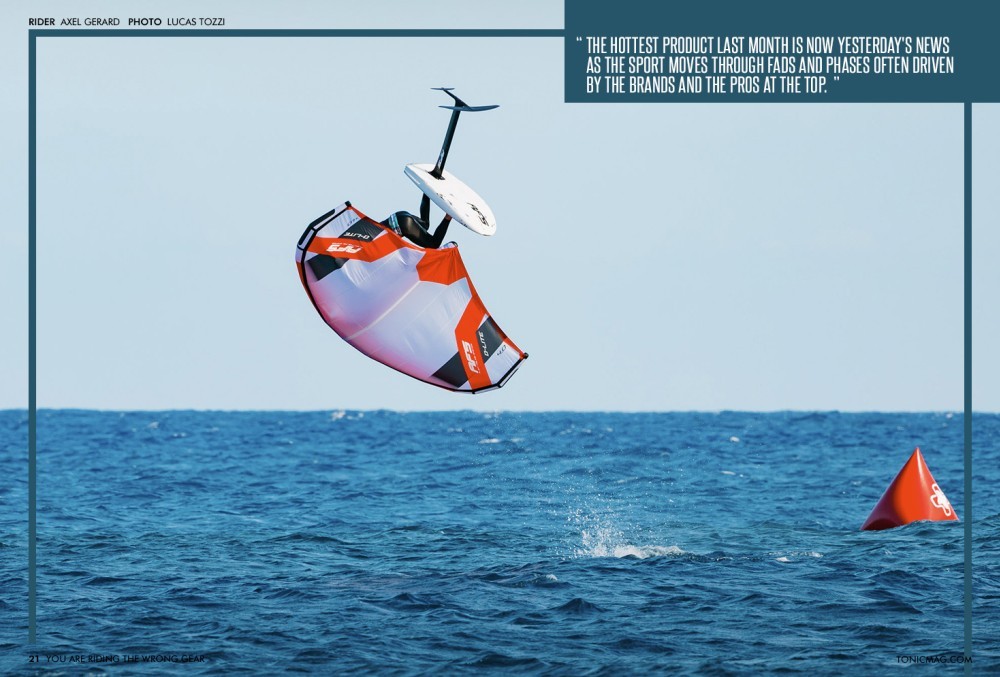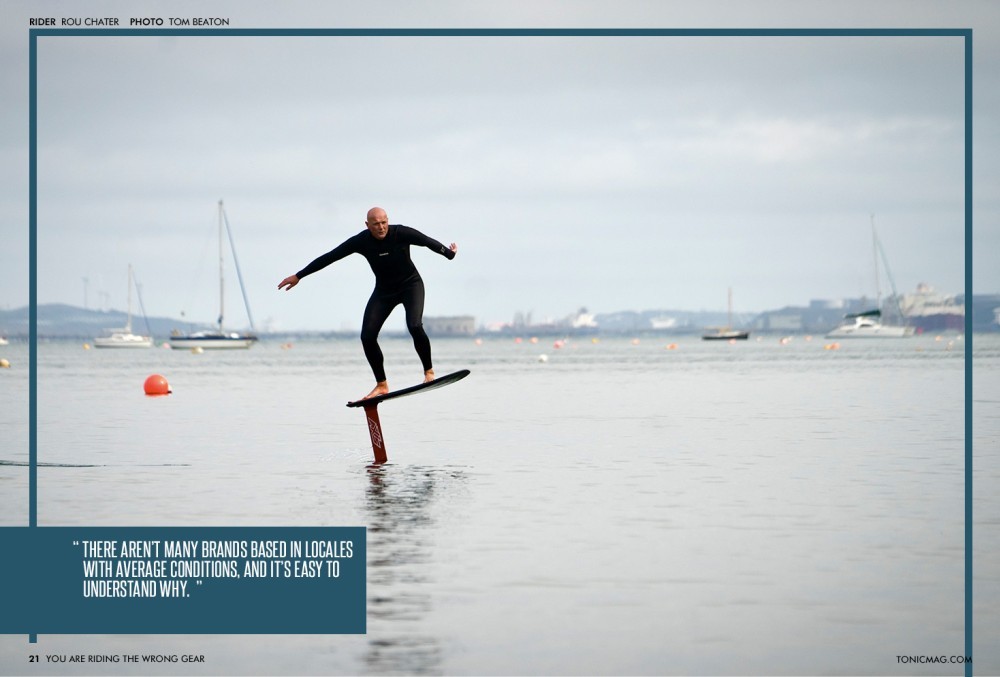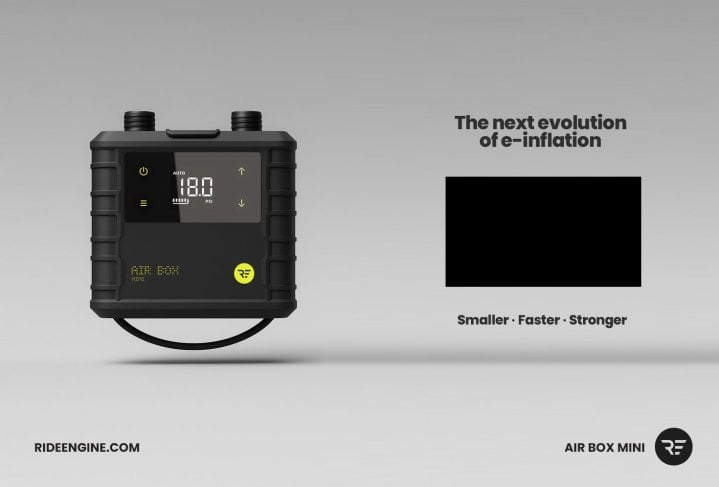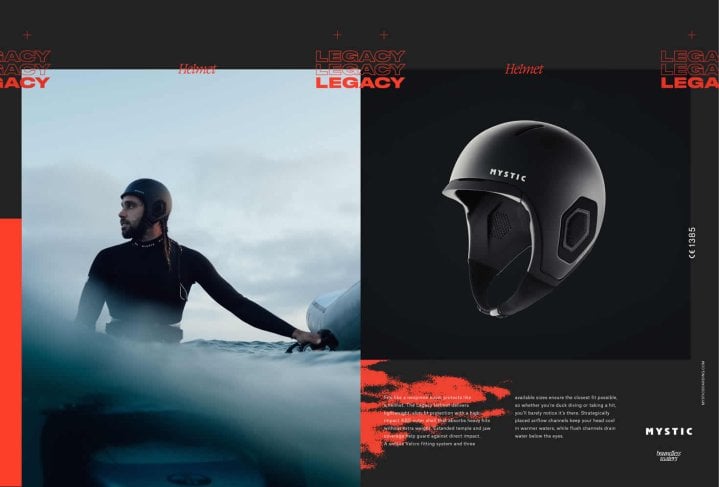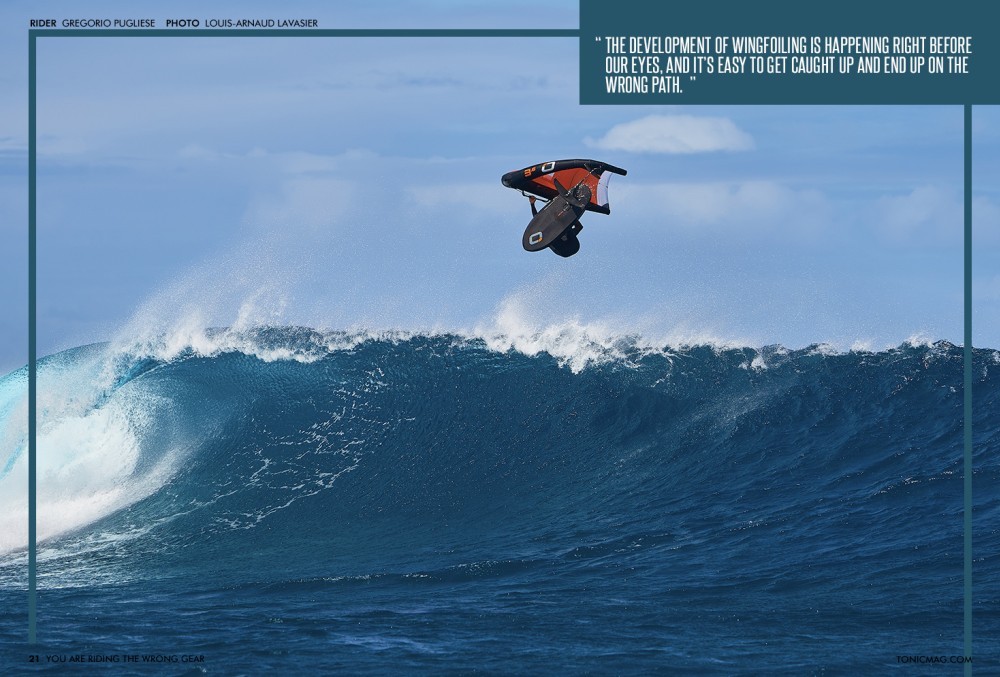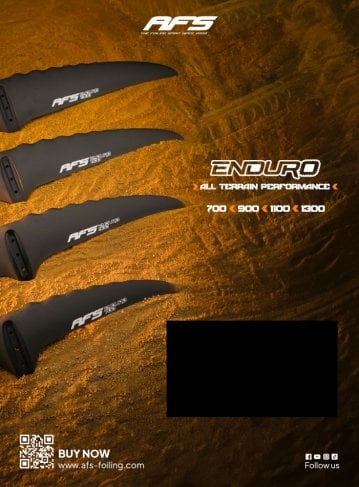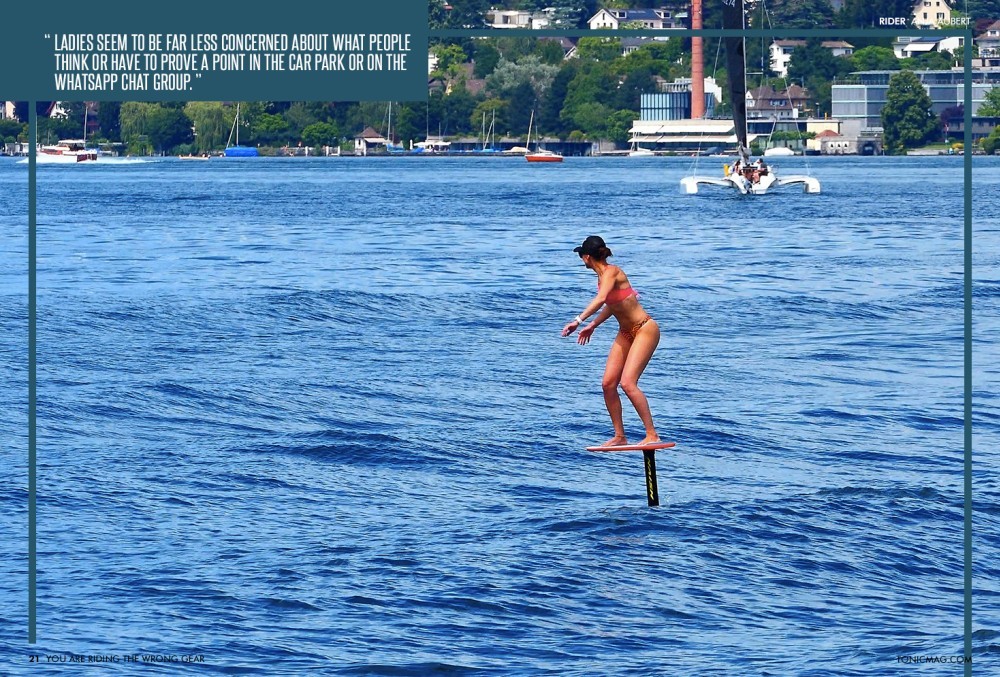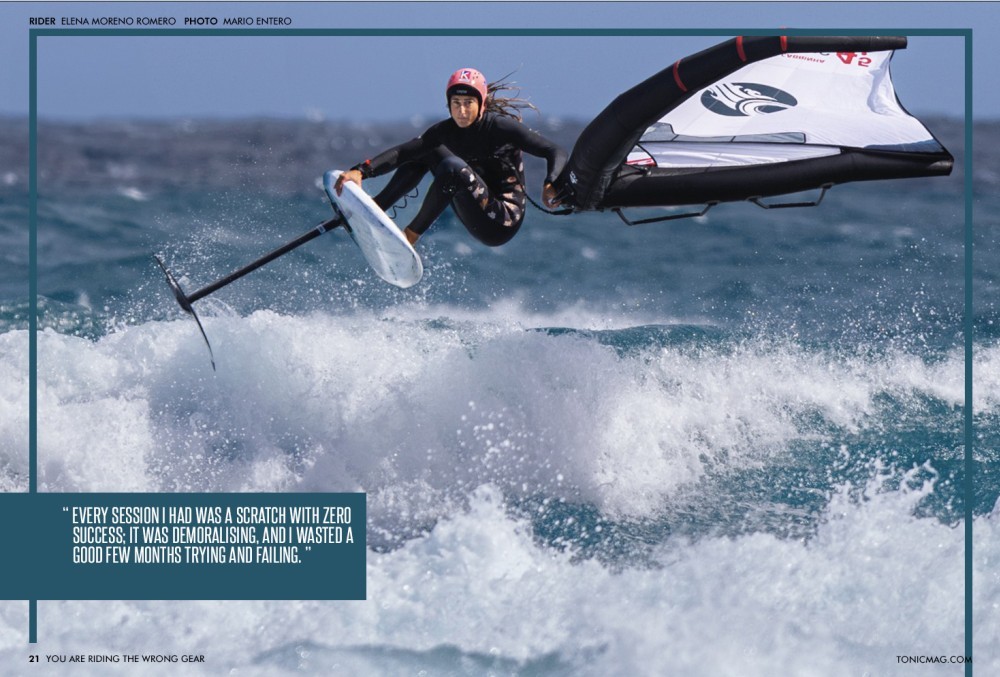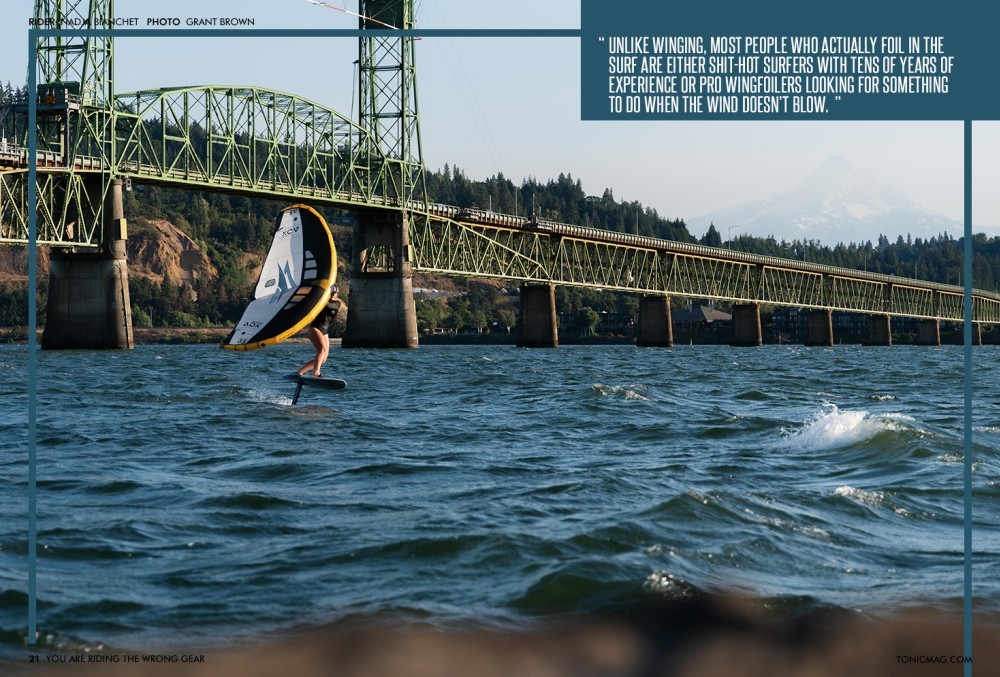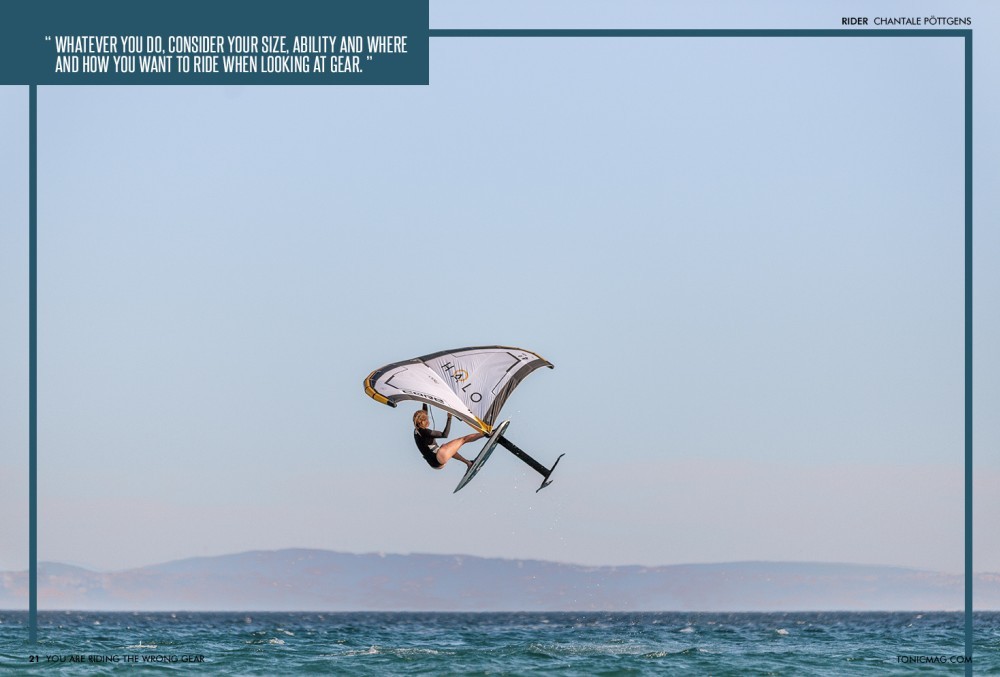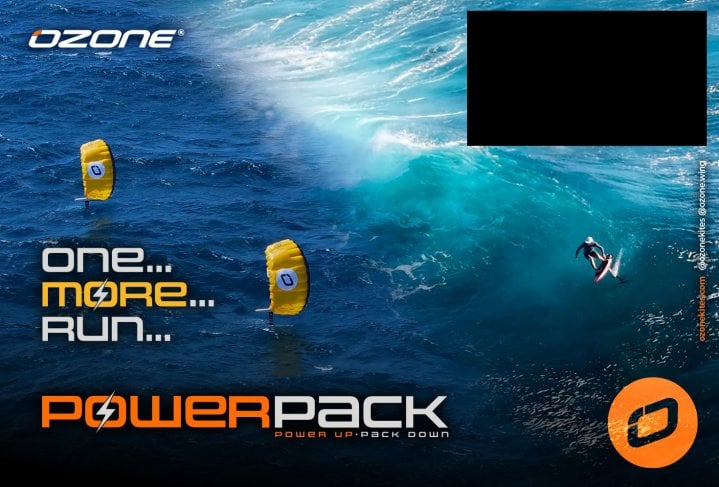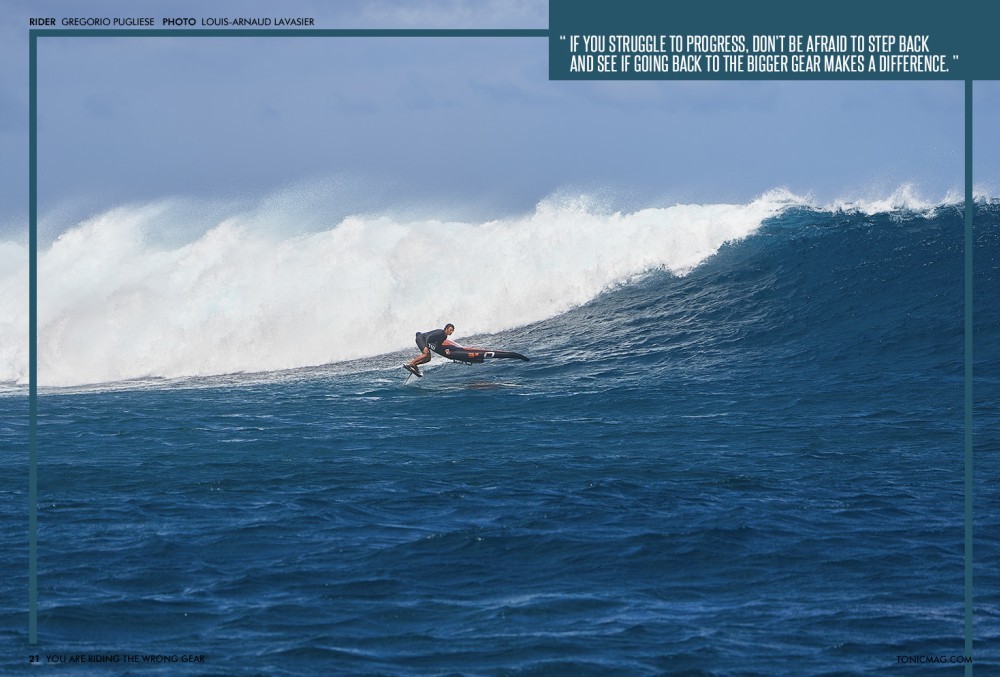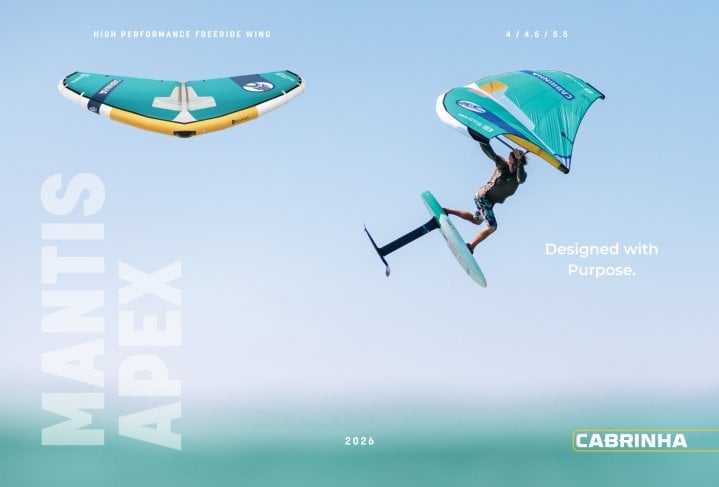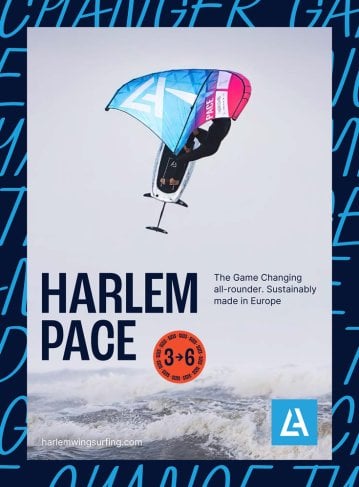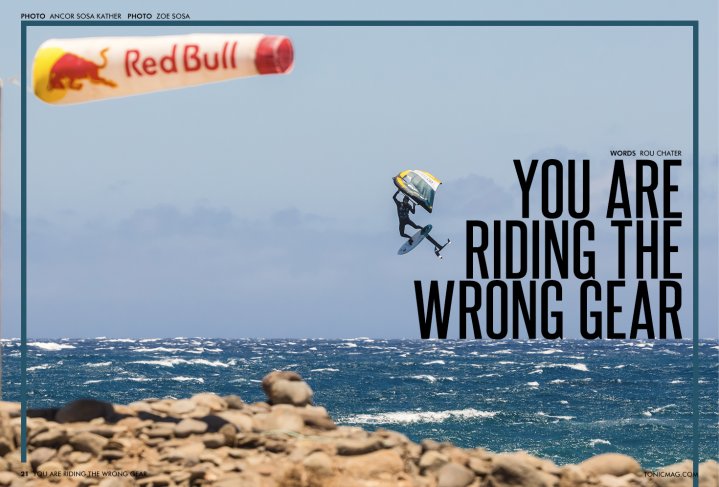
You Are Riding The Wrong Gear
Issue 21 / Tue 20th Aug, 2024
With over four decades of watersports experience, Rou Chater shows how industry hype and relentless trends might steer you away from what truly works for your needs. Don't let the flashy gear fool you—your setup might be holding you back. Discover why bigger might be better, and learn how to find the gear for you - we’ve got it all right here in Tonic Mag!
The chances are, if you believed the hype, you were riding the wrong gear, and the industry doesn’t care…
Foiling is a hotbed of development right now; in my 42 years of watersports experience, I have never seen anything quite like it. In the early days of windsurfing, the development came quickly, but it was often wild and slightly misguided in the direction it took. Kitesurfing the development felt more refined; we’d moved away from men in sheds to CAD and CNC machines, but it was still relatively slow, mainly where kites were concerned in those early days.
Like any sport, windsurfing and kitesurfing soon settled on equipment that worked, and gear development slowed to a more moderate pace; after all, if it ain’t broke, don’t fix it.
However, Foiling is a different beast, and we are all victims of it. The hottest product last month is now yesterday's news as the sport moves through fads and phases often driven by the brands and the pros at the top. Sometimes, this isn’t the best solution for you, the average weekend warrior at the beach…
As a journalist, I’m in the privileged position of being able to test and ride the latest products, but some of them just don’t make sense, and even worse, they might even be holding back your progression. There are a lot of factors at work here: first, where you ride, how you ride, and when you ride. Then, you need to consider your own physique and fitness level, and finally, your skill level will come into play.
I’d wager that after reading this and looking at your gear, you might find that some of it doesn’t quite fit and is perhaps holding you back. Don’t panic; I’ve been in the same boat; it’s easy to get sucked into the trends, fads and marketing that we are bombarded with. The issue is it can be very expensive to try and buy and work out what gear will be best for you.
One universal area is the never-ending dick-swinging contest of wanting to ride smaller and smaller gear. I’m not sure why this happens, but it's probably because you are learning on a 2000+ foil and a 120l board, which is great for learning on but will very quickly hold you back moving forward. Winging has been a huge victim of this, and it’s easy to see why.
If you look at many pro riders, they are 60kg wet through and riding daily in perfect winds on some far-flung sunny beach. Often, those locations have the same conditions day in and day out. They aren’t troubled by the endless weather systems we get in Europe, where the wind can do a 360 in a single day and range from nothing to 50 knots without even thinking about it.
It’s often the case that this is where the gear is tested and built by the brands, too. There aren’t many brands based in locales with average conditions, and it’s easy to understand why. However, this means that perhaps what the brands think is the best gear for the moment isn’t perhaps the best for you. Then, add the multitude of equipment, making the choices even harder. Some brands seem inclined to make everything and let you work it out; others are a little more nuanced.
One thing I hear a lot of in this sport is, what the f**k do I buy? I went to the website and got confused. It’s certainly not easy, and with foils and boards changing rapidly, it becomes even harder.
There is a real danger of turning people off the sport altogether, but I believe with a set of blinkers to the marketing trends and gearing up for your ability, size, and location, you can get through the mire and settle on a setup that works for you…
I’d wager that whatever you have at the moment might not be the holy grail of what you need and what will help you perform at your best.
If you want a good example of this, ponder the humble downwind board. Born out of Maui as a new sport within foiling, the brands were soon pumping these out and telling you they were the best thing since sliced bread for wing foiling, and you all needed one to have fun. Newsflash: this year, that incredibly expensive DW board isn’t getting a mention or much interest on eBay, because this year it’s all about the mid-length! It is the same shape but way shorter and smaller to make it more applicable to winging.
The development of wingfoiling is happening right before our eyes, and it’s easy to get caught up and end up on the wrong path. My main beef, though, is the dick swinging… The quest to ride smaller and smaller boards and foils as a badge of honour, what board are you on? Oh, mine's 20l, and I’m on a 400 foil, which means I have a massive penis, and I’m better than you.
Before you play the sexist card, this does seem to be something that predominantly affects men on the water; ladies seem to be far less concerned about what people think or have to prove a point in the car park or on the WhatsApp chat group.
It stems from wanting to prove you are not a beginner, which we are all keen to do. Everyone wants to get out of their beginner gear when they feel ready, and suddenly, the numbers count. But that can be problematic for your progression if you go too small too fast, and it can be expensive too.
Being able to say you are riding smaller gear than the guy in the car park also makes you “seem” like a better rider which probably gives you a bit of a dopamine hit like that reel of a kiter-eating shit you were sent this morning.
Smaller gear is better, of course; it’s lighter, faster and easier to turn, in theory, but you might not be ready for it, and therefore, instead of discovering the benefits, you just find yourself struggling, and this is the point when the benefits of smaller gear don’t count for you.
This article relates mainly to winging and any kind of foil sport. To prove that, I will use my quest for foil surfing prowess as an example. I’m a fairly shit surfer. I only started properly surfing when I moved to Pembrokeshire 5 years ago. I can now ride a shortboard to an intermediate standard and feel pretty confident in a variety of conditions.
When people started prone foiling in the surf, I wasn’t interested; I didn’t want it to affect my ability to surf, and I didn’t want to learn bad habits or detract from my surfing time and journey. My good buddy Oli was out one day at a spot we were sharing. I was on my small, short groveller in the substandard waves, not having a lot of fun, and he was learning to prone foil and getting some decent enough rides.
After an hour, I decided he was having way more fun than me, and I grabbed my 105l wingboard (you read that right) and my 1780 foil set-up. I paddled out, expecting zero success, but to my surprise, I managed to pop and get on foil on about three waves; it wasn’t much, but it was a lot more than I thought I would achieve in session one.
I was hooked, so for the next week, I carried on and found myself getting better quickly. Once I posted my set-up on social media, I was ridiculed. I wasn’t actively looking for prone foil gear; I was just using my then rather large wing set-up (this was at the beginning of my wing journey). The long and short of it is that I caved to the peer pressure from a bunch of very good surfers who were making decent dents into prone foiling.
On several recommendations, I got a 1400 foil and a 40-litre 4’8” board. I then got very shit at prone foiling. Every session I had was a scratch with zero success; it was demoralising, and I wasted a good few months trying and failing. Eventually, I returned to using my wing board, now a 70l 5’2 with a bit more of a surf shape. I had more success catching waves and popping, but I could not get the foil to get my 85kg ass out of the water.
Eventually, after wasting a lot of sessions and time, I dug out the 1780 front wing and instantly was back to popping and fooling around on the wave. It was a revelation. After a few sessions, I felt I could confidently call myself a surf foiler. Stokesville ensued, and I started to look at what had happened.
I’d listened to the market. I’d listened to my peers, and ultimately, I’d listened to the wrong people. Unlike winging, most people who actually foil in the surf are either shit-hot surfers with tens of years of experience or pro wingfoilers looking for something to do when the wind doesn’t blow. They are also usually young and sporting a six-pack. There are two things I don’t have, well, maybe the six-pack if you look at my fridge.
Essentially, I’d made a gear choice based on other people's opinions and what the market thought I should have. It cost me dearly.
I hadn’t considered their ability, physique and where and how they ride; the thinking had just swayed me; that is still very much the case, that to prone foil, you need a tiny board and a foil thats around 1000 in area.
I firmly believe this is why so many people try prone foiling and fail and why it has the reputation of being one of the most challenging foiling disciplines… Remember, I’m a shit surfer, 85kg and not a pro foiler by any stretch. But I can prone foil to a reasonable standard now, after a couple of years of being on bigger gear.
My current setup is possibly what some would consider a bit more pro. I’m on a 43l board and a 1475 Armstong MA front wing. Pembrokeshire is blessed with good waves, so I’m out surfing when it’s pumping. Foil surfing is a smaller wave affair for me, and I’ve not found a foil that can lift my 90kg when wet in a 6’4” hood much smaller than the 1400 size.
I guess my point here is that I stalled my learning curve by going too small too quickly, which is something I believe many wing foilers do, too, all under the auspices of showing they are better than perhaps they are or conforming to better riders, telling them what they ride is the best.
In winging, the small board phenomenon finally seems dead in the water. Even the freestylers are switching back to bigger boards as they allow them to bounce back up on the foil after a trick. The general rule of thumb is anything over 15l under your body weight is too small and will make things harder.
Of course, thats for a one-board quiver killer. If you want two boards, you may go smaller for the windy days, depending on how you want to ride. But whatever you do, consider your size, ability and where and how you want to ride when looking at gear.
I often get complimented on how long I can ride and link swells for by some of the local crew, but thats is not down to superior skill; it’s just down to riding a bigger foil with loads more lift, making it easier to pump and connect the bumps on. “That’s big” is something I hear a lot while setting up, but a bigger foil, 1200-1400, allows you to get through tacks and gybes with little errors; it will give bigger riders more lift, and it will allow you to pump for far longer too.
Essentially, there is the perfect setup for every occasion, whether winging, dock starting, downwinding, or surf foiling, but that perfect setup is specific to you. It’s not what the industry might be telling you to buy or what the hot shot down the beach is riding. It’s not what a 60kg rider uses when you are 85kg.
It’s also relative to where and how you want to ride. Here in Wales, with the swell we get, riding a 40l wingboard just isn’t an option, you need to get your kit out deep enough to be able to waterstart, and if it sinks too much, you’ll hit the bottom before the next wave smashes you to bits. That isn't the case for a deep water lake with no waves; the location and conditions dictate so much of what you need, as well as your own physique and skill level.
The fastest way to progress is to make things easy on yourself, don’t rush to smaller gear to prove a point, and change one thing at a time, to make the transition easier still. I wish I’d thought about this more years ago when I was learning to surf foil, but sometimes, you must learn the hard way. If you struggle to progress, don’t be afraid to step back and see if going back to the bigger gear makes a difference. I will wage it does, then with more skill, you can revisit the gear choice in the future, but always be open-minded to riding larger gear; it might just change your fortunes and make you better than your dick-swinging mates...
By Rou Chater
Rou Chater has been kitesurfing for over twenty years, paddleboarding for the last six years, and was there testing the first wingsurfer from Naish in Tarifa when it arrived on the continent. He is passionate about riding waves and exploring new places. As the publishing editor, he oversees everything at Tonic but also our sister magazines IKSURFMAG and IMB. He's been on the water since he was born and has never looked back, in the winter you'll find him chasing swells in the Caribbean and during the summer he can be found all over Europe at various SUP, Kitesurf and Mountain Bike events getting features for the magazines.


